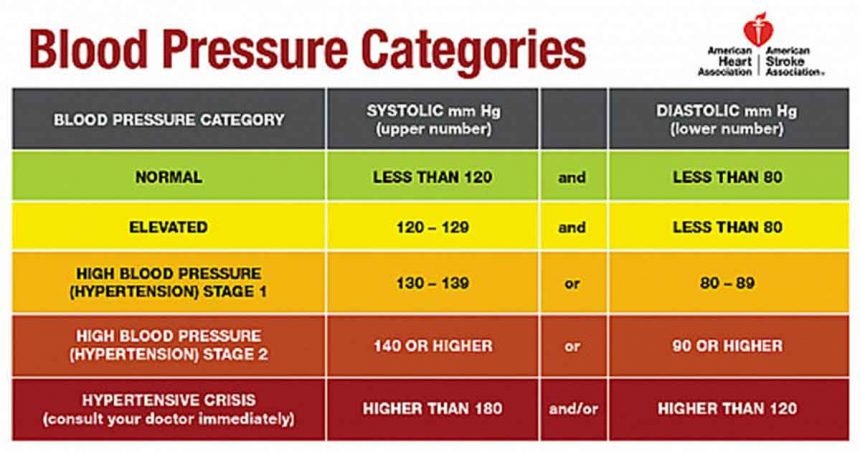Blood pressure serves as a crucial indicator of an individual’s overall health and is often used to assess the risk of various cardiovascular conditions. Recently, the American Heart Association (AHA), the American College of Cardiology (ACC), and other health organizations have updated their blood pressure guidelines, lowering the thresholds for diagnosing hypertension. In this article, we will delve into the significance of these guidelines and discuss their applicability to different groups.
Revised Guidelines Explained
The previous guidelines defined hypertension as a blood pressure reading of 140/90 mm Hg or higher for individuals under 65, and 150/80 mm Hg or higher for those aged 65 and above. However, the new guidelines, influenced by the Systolic Blood Pressure Intervention Trial (SPRINT) of 2017, set the threshold at 130/80 mm Hg for all adults.
The SPRINT study involved over 9,000 adults aged 50 and above, aiming to determine if targeting a systolic pressure of 120 mm Hg or less was more effective in reducing the risk of cardiovascular events compared to the standard target of 140 mm Hg or less. The results pointed towards a significant reduction in cardiovascular events for those with lower systolic pressure levels.
Redefining Hypertension Categories
In addition to adjusting the thresholds, the updated guidelines have redefined the categories of hypertension. The category of prehypertension has been eliminated, with individuals falling within the 120-139 systolic and less than 80 diastolic range now classified as having elevated blood pressure or Stage 1 hypertension.
Furthermore, individuals with a reading of 140/90 mm Hg or higher are categorized as Stage 2 hypertension, while readings above 180/120 mm Hg are considered a hypertensive crisis.
Targeted Population for Guidelines
The primary goal of the updated guidelines is to facilitate early identification and intervention among individuals with high blood pressure. By expanding the criteria for diagnosis, healthcare providers aim to address associated health risks such as heart attacks and strokes at an early stage. The guidelines now apply uniformly to all adults, without age distinctions, based on findings from the SPRINT study.
Individual Considerations
While the updated guidelines provide a valuable framework for healthcare professionals, it is crucial to consider individual circumstances when determining the appropriate course of action. For individuals with existing hypertension diagnoses, the new guidelines may prompt adjustments in their treatment plans to further reduce cardiovascular risks.
The guidelines may have a significant impact on individuals aged 65 and above, potentially placing more of them in the elevated or high blood pressure categories. Lifestyle modifications, such as increased physical activity, weight loss, and heart-healthy diets, are recommended before considering medication.
Home Blood Pressure Monitoring
To support the implementation of the updated guidelines, regular blood pressure monitoring at home is encouraged. Home blood pressure monitors are accessible and affordable, enabling individuals to track their blood pressure changes accurately. Proper techniques for measuring blood pressure at home are essential for accurate readings.
In Conclusion
The latest blood pressure guidelines offer a comprehensive framework for healthcare providers to manage hypertension effectively. While these guidelines reflect medical advancements, individual circumstances and collaboration with healthcare providers are essential in determining the most suitable treatment approach. By staying informed and proactively monitoring blood pressure, individuals can take control of their cardiovascular health and prevent complications associated with hypertension.






